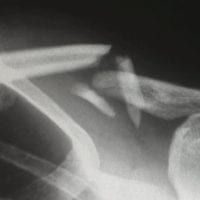How to Prove Who’s At Fault for Your Injury

When you’ve been injured because a person or entity didn’t care enough about public safety to prevent an accident, how do you prove they’re at fault?
The question of fault (liability) is key to pursuing a personal injury claim to hold the other party responsible for all the monetary damages for your accident, and for money for all the consequences to you. When a person or entity is negligent, reckless or intentionally harmful you are entitled to compensation sufficient to be a fair trade for what you’ve been through.
Of course, you must be able to prove liability in order to collect. Of course it’s natural to be really relieved when liability is plain and clear, such as when it’s admitted, there can be an advantage that can add value to your case when a party fights you on liability. Jury verdicts are often driven by anger more than sympathy. When jurors can see that someone or, even better, some company is not owning up and taking responsibility, this can “aggravate” liability, resulting in a much better outcome. For this reason, smart defense counsel will often insist that their clients admit liability at trial, and just fall back to claiming that the injured person is greedy and overreaching, which plays into prejudices many jurors have.
Legal Definition of “Liability”
For the purpose of understanding responsibility in a personal injury claim, liability is a legally enforceable claim on the assets of a business or property of an individual or entity. It is based on a breach of duty or obligation to act responsibly. https://www.law.cornell.edu/wex/liability Under both federal and California law, adults and businesses are assumed to be responsible for their conduct and that such conduct does not put others in physical jeopardy. To do otherwise is called negligence. To determine fault, one or more elements of negligence, recklessness or intentional misconduct must be proven. The legal definition of those terms is explained accordingly:
https://injury.findlaw.com/accident-injury-law/recklessness.html Most injury cases are based on negligent conduct, that is, an accident, something that’s unintentional. Insurance doesn’t even cover intentional conduct in most situations, as a matter of public policy.
When a party fails to act responsibly or through intentional misconduct injures someone, they have an obligation, or legal duty, to pay monetary damages. https://www.law.cornell.edu/wex/Obligation
A person or entity has a legal obligation, called a duty, to behave in a responsible manner. This is a technical distinction, whereby you have to show that the other party “owed you a duty.” Usually this isn’t a problem, as we all owe each other the most basic duty of care. Here is a jury instruction which neatly summarizes that duty: https://www.justia.com/trials-litigation/docs/caci/400/401/ The breach of this duty = negligence in most cases.
The Three Main Legal Categories of Breach of Duty To Another
Negligence means the person or entity acted in violation of duty to another with that breach of duty causing harm to someone else.
Recklessness means the person or entity knew, or should have known, that their action(s) were likely to cause harm.
Intentional misconduct is the conscious or willful disregard of the rights and safety of another or with knowledge at the time of the conduct that it was harmful to the health or well-being of another person.
When one or more of these breaches caused injuries to another person, liability can be proven through the legal system, so long as the other elements are present, such as damages which can be causally linked to the improper conduct.
Determining Fault or Liability
The easiest way to determine fault is when the injuring party acknowledges their responsibility in causing harm through negligent, reckless or intentional misconduct. However, to avoid loss of assets and property, the at-fault party is unlikely to admit their failure to perform a reasonable duty of care. If they have an attorney, their counsel will likely advise them not to admit fault regardless of their responsibility in the accident or intentional misconduct.
In most cases, proving fault requires evidence collection, which may include an investigating police officer’s accident report, photographs/videos taken at the scene of the accident, medical documentation of the injury, witness statements, if any, and more when applicable. Often Freedom of Information Act requests can yield helpful information.
When this information is compiled as proof of the injuring party’s fault, it can be presented to an insurance company or the injuring party with a formal demand for compensation.
If many cases, a personal injury case will require a civil court lawsuit in a California superior court. Choice of the county where the case can be filed is important, as it the judge.
Should a personal injury case proceed to a civil lawsuit, a trial will commence before a judge and jury who will hear the evidence to determine fault for the accident or intentional misconduct. These cases are rarely tried without a jury.
Proving Fault in California Can Be Difficult and Demands the Expertise of An Experienced Attorney
Without an aggressive, skilled attorney to help prove who’s at fault when you’ve been injured because of the negligence, recklessness or intentional misconduct of another, you may never collect monetary damages for the harm done to you. Or you may settle for far less compensation for what you justly and legally deserve.
The Callaway & Wolf Team Brings Over Two Decades of Experience to the Monetary Fight for the Seriously Injured
The highly skilled San Francisco personal injury attorneys at Callaway & Wolf provide a hands-on approach to each client’s case. Unlike some larger firms, we don’t hand off the important matter of proving fault to paralegals and legal assistants. Founding partners Boone Callaway and Carl Wolf take seriously the monetary compensation an injured person deserves when someone has hurt them.
Results-Focused, Trial-Savvy Injury Attorneys
As members of the San Francisco and greater Bay Area community, we are concerned about our neighbors. You deserve to get the largest settlement possible allowed by law; that’s our job. Part of the job, which can be important to maximizing your compensation, is helping you recover, and get the best treatment. Our fees are a contingency basis–only when you get paid. And there will never be any up-front cost to you for a personal injury case.
Contact Callaway & Wolf Law Before Time Runs Out to File A Claim
Because the statute of limitations for an injury claims are strict, it’s critical that you contact us immediately for answers to your questions and help proving damages. Call our dedicated, compassionate legal team at 415-541-0300 to schedule a free personal consultation at our San Francisco office. Or if you prefer, send us a confidential message on our contact notepad, and you’ll receive a prompt response.

Boone Callaway is a personal injury & medical malpractice lawyer in San Francisco who has been working with clients in the Bay Area for over 25 years. Mr. Callaway is one of only a few personal injury litigators in San Francisco who is a Super Lawyer, AV Rated and is also a member of ABOTA – American Board of Trial Advocates.
